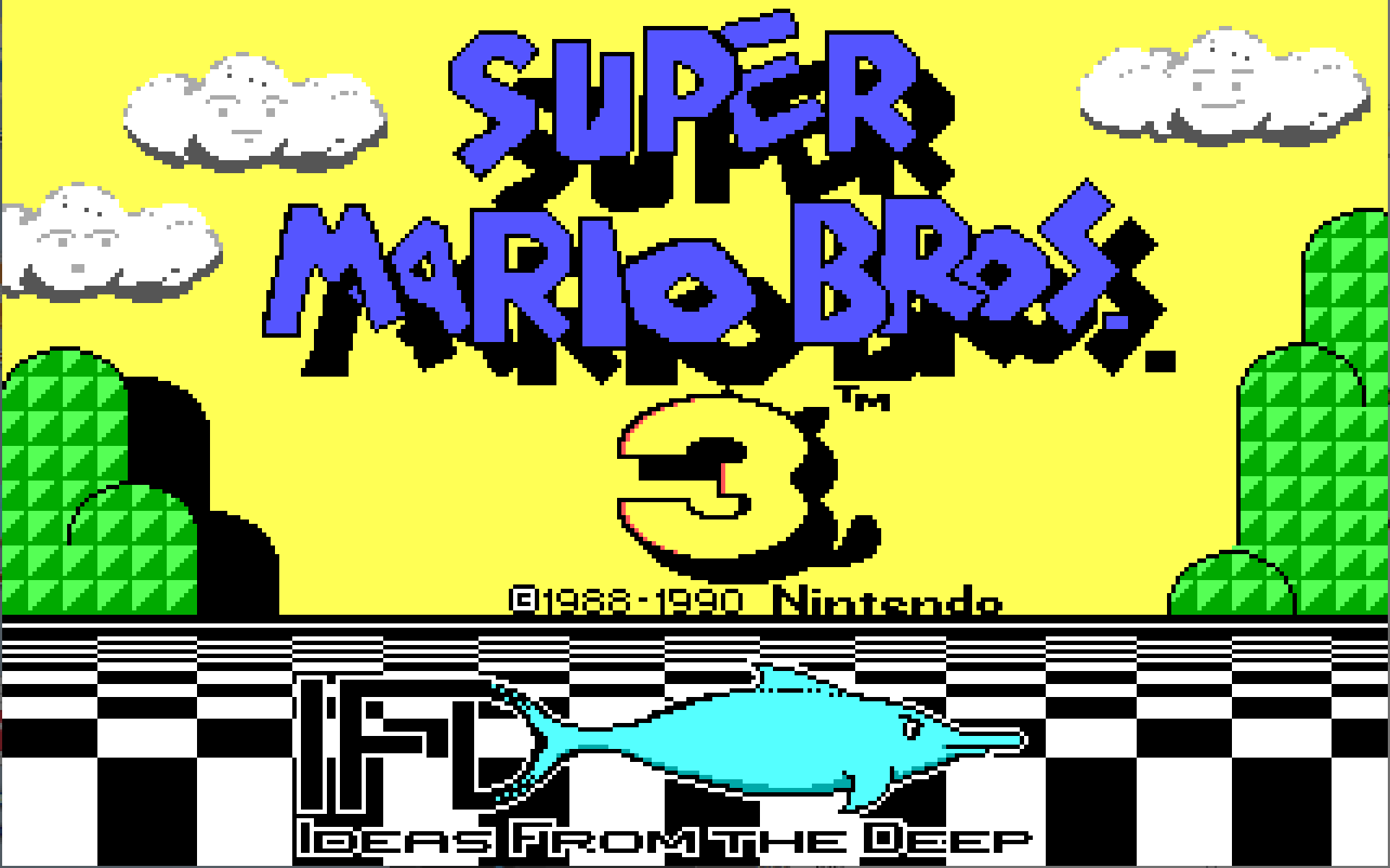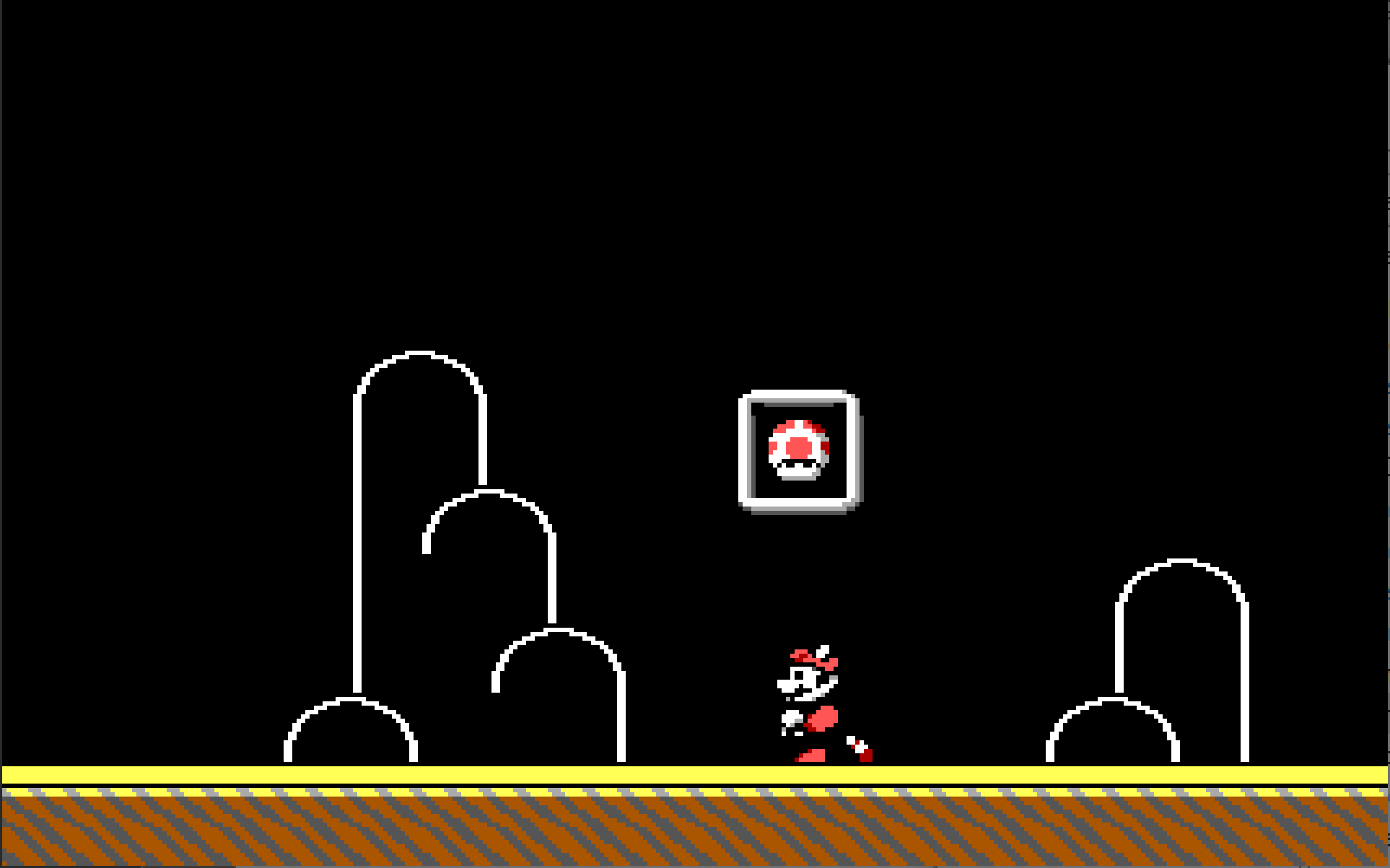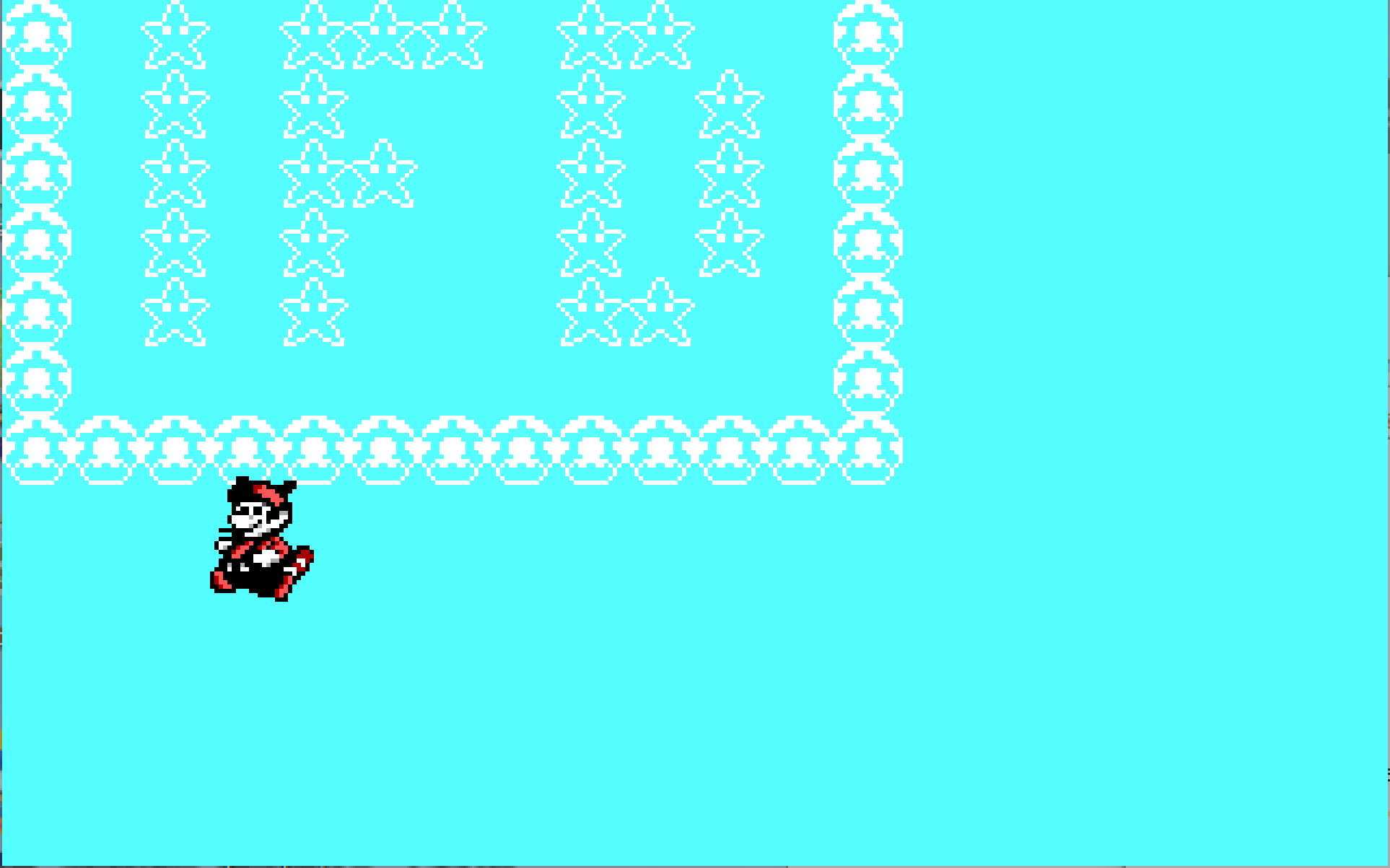 Two logos you do not expect to see together...
Two logos you do not expect to see together... The demo has no sound, but I'd love to hear what Sound Blaster could have done with this map screen music...Andrew Borman / Strong Museum of Play
The demo has no sound, but I'd love to hear what Sound Blaster could have done with this map screen music...Andrew Borman / Strong Museum of Play Is it wrong that I like id's take on the piranha plant sprite more than Nintendo's?
Is it wrong that I like id's take on the piranha plant sprite more than Nintendo's? You got a card!Andrew Borman / Strong Museum of Play
You got a card!Andrew Borman / Strong Museum of Play If you fly with the raccoon tail, an IFD logo is hidden in the upper-left corner of level 1-1.Andrew Borman / Strong Museum of Play
If you fly with the raccoon tail, an IFD logo is hidden in the upper-left corner of level 1-1.Andrew Borman / Strong Museum of Play The previously unseen Level 1-4 includes an interesting coin-filled pyramid.Andrew Borman / Strong Museum of Play
The previously unseen Level 1-4 includes an interesting coin-filled pyramid.Andrew Borman / Strong Museum of Play Albino Mario hangs out in Level 1-4.Andrew Borman / Strong Museum of Play
Albino Mario hangs out in Level 1-4.Andrew Borman / Strong Museum of Play
The Strong National Museum of Play has obtained a rare demo of Super Mario Bros. 3 that a pre-Doom id Software coded for MS-DOS PCs back in 1990. The acquisition will ensure that the historical curiosity will be preserved and accessible to researchers well into the future.
Students of video game history have long been aware of the existence of the demo, which was described in detail in David Kushner's excellent 2003 book Masters of Doom. id Software—then known as Ideas from the Deep (IFD)—coded the game in under a week and sent a copy to Nintendo in the hopes of getting a contract to develop an official PC port of the NES classic, which had launched in the US earlier in 1990.
Part of what made the demo special was a John Carmack-coded scrolling algorithm that went way beyond the stuttering background movements and full-screen wipes you'd usually see in late '80s DOS games. "When looking at PC games of the era, there really weren't titles with the smooth scrolling seen in Nintendo’s hits," Museum of Play Digital Games Curator Andrew Borman told Ars via email. And though Nintendo would never entertain the idea of a PC port for SMB3, id Software was "not deterred by the rejection, [and] the technology was reused for Commander Keen, which is still one of my favorite series of that era," Borman said.
A surprise find
Though the demo's existence has been well-known for a while, the closest the general public has gotten to it was a 2015 video released by John Romero showing many of the demo's levels and functionality. Fast forward to today, when Borman said he was surprised to find the demo sitting inconspicuously in a larger collection of donated software."The individual who donated it was a game developer," Borman told Ars. "But they did not work on this pitch, instead receiving [it] during their work. It wasn't something I expected to see in this donation, but it was extremely exciting, having seen the video Romero shared back in 2015. One of my favorite things at the museum is helping to process incoming donations, especially when we can help share stories from important developers like id Software."
Before testing the game for himself, Borman said he imaged the original floppy (to help preserve the physical artifact) and verified the contents by comparing a run on the DOSBox emulator to Romero's 2015 video. He was then able to explore the little-seen demo for himself, including Level 1-4, which had never been seen by the public, and a cheeky "IFD" logo spelled out in stars and mushrooms in the upper-left corner of Level 1-1. He described 1-4 as "a fairly flat level, though it has a nice pyramid at the end."
"It is an early demo, though, and lacks many features and polish that would have been seen had the developers been able to work with Nintendo in creating a full retail release," Borman said. "For being such an early demo, it is a lot of fun to play, especially 1-1, which recreates that iconic first level from Super Mario Bros 3."
It belongs in a museum
Borman said the demo will be available upon request to researchers and other parties with a relevant interest. There are no current plans to exhibit the game to the public in the Strong's soon-to-be-expanded Rochester museum space or elsewhere. But Borman said that "there are plenty of opportunities to come in the future" for that kind of display.
The Museum of Play will also ensure that this piece of history will be accessible to future generations of gaming historians. "Our preservation work focuses not only on the research needs of today but also how researchers decades from now, some who may not even be born yet, will access material," Borman said. "Proper climate-controlled storage helps to preserve those physical artifacts, especially when materials like plastic degrades over time. We are also building out our digital preservation capabilities, allowing us to preserve the many forms of media that we find, including the various cartridge and optical mediums."
Research interest aside, the newly preserved demo provides a window into an alternate universe where two of the most important companies in gaming teamed up to revolutionize '90s PC gaming. "While the demo here really represents a week or less of work, knowing now how important id Software would become, it is an interesting 'what-if?' of game history," Borman said. "It’s fun to think about how the company could have changed had it formed a relationship with Nintendo."
Listing image by Andrew Borman / Strong Museum of Play
Article From & Read More ( Museum obtains rare demo of id Software's Super Mario Bros. 3 PC port - Ars Technica )https://ift.tt/3eitUg1
Technology
Bagikan Berita Ini















0 Response to "Museum obtains rare demo of id Software's Super Mario Bros. 3 PC port - Ars Technica"
Posting Komentar